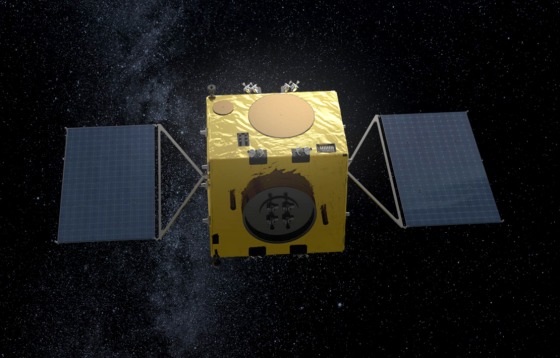Europe's next asteroid mission, which could launch in 2023, will rely on the same kind of navigation technology as self-driving cars.
Named "Hera" after the Greek goddess of marriage, this proposed planetary defense mission would visit the 2,550-foot-wide (780 meters) asteroid 65803 Didymos and its tiny satellite, a 525-foot (160 m) object informally nicknamed "Didymoon."
While deep-space missions typically rely on controllers back on Earth to send navigation commands, Hera will have an automatic navigation system built in. This will allow Hera to steer itself in real time rather than waiting several minutes to receive a command signal sent from Earth.
Related: The Greatest Asteroid Encounters of All Time!
"If you think self-driving cars are the future on Earth, then Hera is the pioneer of autonomy in deep space," Paolo Martino, the lead systems engineer for Hera, said in a statement. Having an autonomous navigation system will enable the spacecraft to fly closer to both Didymos and Didymoon, which will allow it to take better high-resolution images of their surfaces, European Space Agency (ESA) officials said in the statement.
Much like a self-driving car, the Hera spacecraft will rely on data from sensors, cameras and lasers "to build up a coherent model of its surroundings," Jesus Gil Fernandez, a guidance, navigation and control engineer at ESA, said in the statement.
Hera won't be relying entirely on its autopilot for this first mission. The mission is still designed to be operated from the ground, and it won't start testing out the new system until all the mission's major objectives are complete, Fernandez said.
Hera is one part of the larger Asteroid Impact and Deflection Assessment (AIDA) mission, which also includes a NASA spacecraft that will head to the same asteroid system. NASA's Double Asteroid Redirection Test (DART) mission aims to crash a spacecraft into the asteroid's surface, and the spacecraft will bring along two small cubesats that will examine the asteroid's surface.
While DART's mission is to smash into the asteroid, Hera's mission is to orbit the asteroid and observe the collision from a safe distance before swooping down to study the impact crater up close. The goal of the mission is to demonstrate a planetary defense strategy known as asteroid deflection. In other words, scientists want to figure out if it's possible to save Earth from a potentially catastrophic asteroid strike by launching a spacecraft at the asteroid to knock it off course.
- Humanity Will Slam a Spacecraft into an Asteroid in a Few Years to Help Save Us All
- To Nuke an Asteroid, How Powerful a Bomb Do You Need?
- Europe Plans Second Attempt at Asteroid Planetary Defense Mission
Email Hanneke Weitering at [email protected] or follow her @hannekescience. Follow us on Twitter @Spacedotcom and on Facebook.
SIGN UP FOR THE MACH NEWSLETTER AND FOLLOW NBC NEWS MACH ON TWITTER, FACEBOOK, AND INSTAGRAM.
